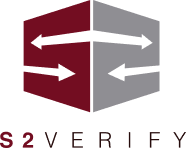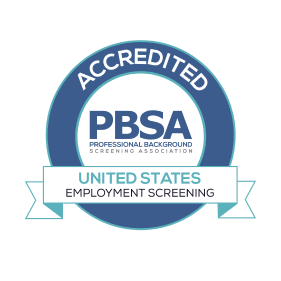Employment Screening Lessons from a CIA Officer
What does espionage have to do with employment screening?
According to Carmen Amato, a retired CIA intelligence officer turned award-winning author, plenty.
With over 30 years of experience uncovering deception and assessing threats, Carmen’s lessons are increasingly relevant to HR professionals navigating today’s high-stakes hiring environment.
The insights she shared on this week’s episode of America Back to Work offer a masterclass in identifying risk, improving candidate assessments, and refining employment screening strategies for a more secure workplace.
The Mechanics of Deception in Employment Screening
Carmen’s CIA experience taught her that lies aren’t just about motives, they’re about method.
“What makes a lie stick? What makes it believable?” she asks.
In employment screening, this translates to identifying how applicants might manipulate or disguise the truth, not just outright lying, but also gaming systems like AI-driven résumé scans.
Today’s candidates may tailor resumes not for accuracy, but to “pass the test.”
As Carmen explains, “They might not actively be lying, but their resume looks different than it would have had they not been trying to game the AI.”
These nuances in deception make thorough, strategic screening essential.
Why Culture Fit Should Drive Employment Screening Decisions
In her role as a CIA hiring manager, Carmen discovered that qualifications are just the beginning.
“It’s got to be a good fit for the culture,” she emphasizes.
That principle holds true in every effective employment screening process. Technical credentials may open the door, but a poor cultural fit can create long-term risks, especially in roles where integrity and adaptability are crucial.
At the CIA, even those with impressive academic titles were treated as equals.
Carmen recalls, “One colleague was upset they weren’t being addressed as ‘Doctor.’ That’s not how the agency operates.”
Cultural misalignment like that becomes a red flag, one that employment screening must catch early.
Communication: The Silent Hero of Employment Screening
A strong communication plan, internal and external, is critical to managing insider risk. Carmen credits clear, consistent messaging across teams as one of the CIA’s most effective employment screening tools.
“We all knew what disqualified someone, even if they looked great on paper,” she says.
That same clarity, applied by HR teams, ensures candidates are accurately assessed and appropriately guided throughout the hiring process.
Maintaining a personal connection during lengthy hiring timelines is equally important. Candidates drop out when they feel unseen.
“Having a single point of contact made all the difference,” Carmen adds.
Behavioral Red Flags and Interview Techniques from the Intelligence Field
Employment screening should go beyond the checklist. Carmen highlights subtle indicators like:
- Deflection: Answering a question you didn’t ask
- Defensiveness: Overreacting to routine queries
- Dissembling: Struggling to maintain a consistent narrative
To expose inconsistencies, the CIA often used a dual interview technique, one interviewer goes chronologically, the next in reverse. Carmen suggests this as a practical, private-sector-friendly approach to deepen candidate evaluation and validate their story.
Adapting Employment Screening to a Changing Workforce
Carmen warns that traditional employment structures may be losing their appeal. The gig economy, rigid hierarchies, and poor management relationships are turning top talent away. Modern employment screening must account for these shifts by highlighting flexibility, cultural connection, and long-term engagement.
One tactic from her agency playbook? Leverage current employees to attract talent. Offer incentives, but only after the referred candidate proves to be a good hire.
“It’s not just about bringing someone in, it’s about them staying and thriving,” she notes.







